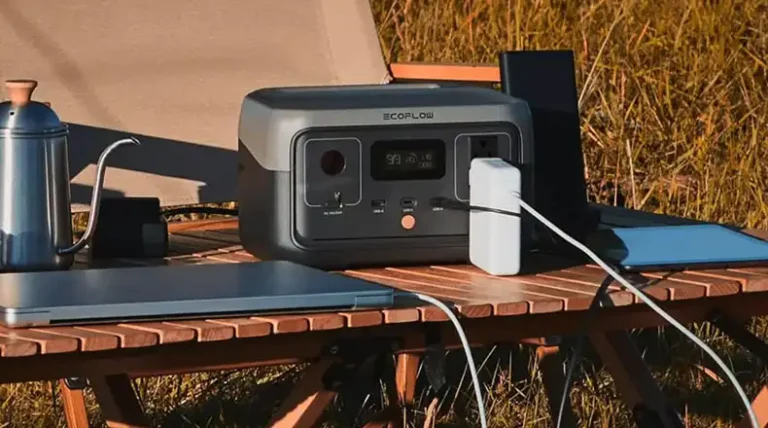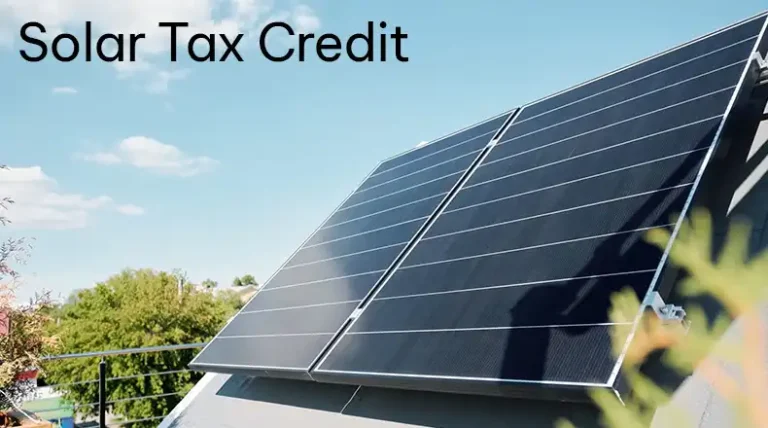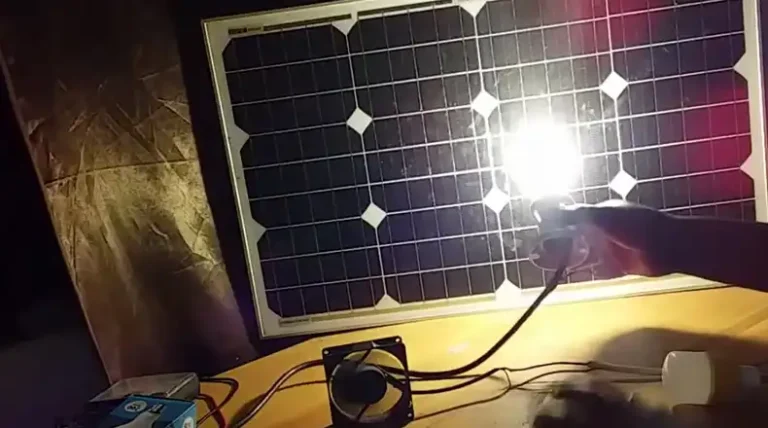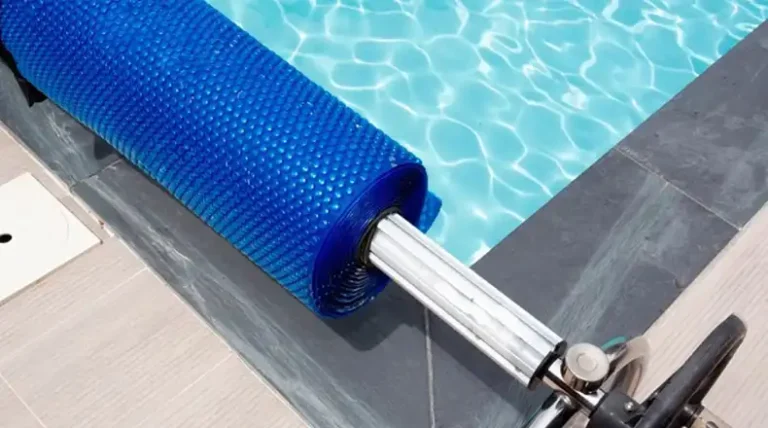Do Solar Roof Vents Work At Night [Answerd]
Solar roof vents have gained popularity among homeowners seeking energy-efficient and cost-effective solutions for attic ventilation. However, a common misconception surrounds their ability to function at night or during periods of low sunlight.
Unfortunately, this is not the case for standard solar roof vents. The reality is they can only operate when the sun is shining and most solar roof vents cannot store energy for use during the night.
To fully understand the limitations of solar roof vents and address any potential concerns, it’s crucial to understand the mechanics and technology behind these ventilation systems. In this guide, I’ll help you explore the inner workings of standard solar roof vents, their daytime performance, and the factors that influence their efficiency. Let’s read and learn!
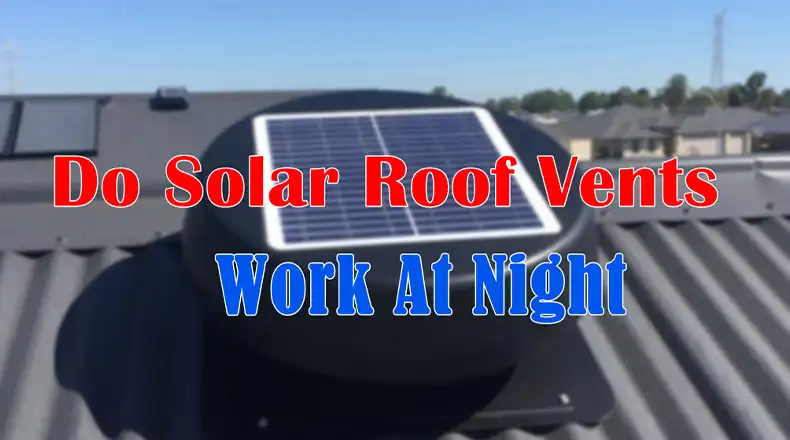
How Do Standard Solar Roof Vents Work?
Standard solar roof vents are designed to provide attic ventilation during the day when there is direct sunlight available. They typically consist of two main components: a solar panel and a low-voltage fan or turbine.
During the day, the solar panel absorbs energy from the sun and converts it into electrical power. This power is used directly to run the fan or turbine, which draws hot air out of the attic and promotes airflow.
However, once the sun sets or during periods of low sunlight, the solar panel stops generating electricity, and the fan or turbine comes to a halt.
These devices typically do not come equipped with a battery or any other type of energy storage system. Instead, the energy generated by the solar panel during the day is used directly to power the vent’s fan.
Can Solar Roof Vents Work At Night?
Standard solar roof vents are designed to operate solely during daylight hours when the sun is shining. Unlike advanced solar systems with battery backup or energy storage capabilities, these vents do not have a way to store energy for use at night or during periods of low sunlight.
When the sun sets or clouds obscure direct sunlight, the solar panel on a standard solar roof vent stops generating electricity. As a result, the vent’s fan or turbine, which relies on this electricity to function, will cease to operate until sufficient sunlight becomes available again.
This limitation means that standard solar roof vents cannot provide continuous attic ventilation throughout the day and night. During the nighttime hours or overcast conditions, the attic will not receive any air circulation or exhaust from the solar vent, potentially leading to temperature fluctuations and moisture buildup.
While this may not be a significant issue in some climates or for certain homeowners, it can be a considerable drawback for those who require consistent attic ventilation or live in areas with long periods of low sunlight exposure.
MB400 Zephyr: Solar Vent that Can Work at Night
While standard solar roof vents are limited to daytime operation, some advanced models like the MB400 Zephyr have been designed to overcome this limitation. This particular model incorporates a rechargeable battery pack that allows it to function at night or during periods of low sunlight.

The MB400 Zephyr consists of three main components: a solar panel, a rechargeable battery pack, and a low-voltage fan or turbine. During the day, the solar panel converts sunlight into electrical energy, which is used to power the fan and charge the battery pack simultaneously.
When the sun sets or clouds obscure direct sunlight, the MB400 Zephyr seamlessly transitions to using the stored energy in its battery pack to continue operating the fan or turbine. This battery backup system ensures that the attic receives consistent ventilation throughout the day and night, without interruptions due to changes in sunlight availability.
The battery pack in the MB400 Zephyr is designed to provide several hours of runtime during nighttime or low-light conditions, depending on factors such as the attic size, ventilation requirements, and the battery’s charge level. Once sunlight becomes available again, the solar panel will automatically recharge the battery, ensuring continuous operation.
It’s important to note that the runtime of the battery pack may vary based on the specific model and manufacturer’s specifications. Some advanced solar roof vents may offer longer battery life or even allow for easy replacement or upgrade of the battery pack over time.
Wrapping Up
Standard solar roof vents are designed to provide energy-efficient and eco-friendly attic ventilation during the day when there is direct sunlight available. While these vents can be effective in certain situations, they may not provide the consistent ventilation required for some homes, particularly in areas with frequent cloud cover or long nights. If continuous attic ventilation is a priority, it’s essential to consider alternative solutions or supplementary options, such as powered attic fans, solar roof vents with battery backup, or combination systems. If you have any additional questions or need further assistance in choosing the right attic ventilation solution for your home, feel free to leave a comment below. I’ll be happy to provide guidance based on our expertise in the field of solar technology and home improvement.
Thank you for reading, and we wish you the best in finding the ideal ventilation system that meets your specific needs and preferences.
Frequently Asked Questions
What Is The Main Drawback Of Standard Solar Roof Vents?
The main drawback of standard solar roof vents is their inability to operate at night or during periods of low sunlight, as they do not typically come equipped with a battery or energy storage system.
Can Solar Roof Vents Work On Cloudy Days?
Standard solar roof vents can work on cloudy days, but their performance will be reduced due to the lower levels of sunlight available for the solar panel to convert into electricity.
Are Solar Roof Vents Completely Silent?
Yes, solar roof vents are designed to operate silently, making them a quiet and unobtrusive ventilation solution compared to traditional powered fans or turbines.
How Long Do Solar Roof Vents Last?
With proper installation and maintenance, solar roof vents can last for many years. The solar panels and fan components are designed to withstand outdoor conditions and have a lifespan of 10-20 years or more.
Can Solar Roof Vents Be Used In Conjunction With Other Ventilation Systems?
Yes, solar roof vents can be used in combination with other ventilation systems, such as powered attic fans or ridge vents, to create a hybrid ventilation solution that provides continuous airflow throughout the day and night.
What Happens When A Solar Roof Vent Cannot Operate At Night?
When a standard solar roof vent cannot operate at night or during periods of low sunlight, the attic ventilation is disrupted, potentially leading to temperature fluctuations, moisture buildup, and reduced indoor air quality.
Are There Any Alternatives That Work Both Day And Night For Attic Ventilation?
Yes, there are alternatives that can provide continuous attic ventilation both during the day and at night, such as powered attic fans or solar roof vents with integrated battery backup systems.
Can A Solar Roof Vent Cause My House To Become Too Cold At Night?
No, solar roof vents themselves do not actively cool your home or attic. They simply facilitate air circulation and ventilation, which can help regulate temperatures but should not cause excessive cooling at night.
Can I Integrate A Battery System With My Solar Roof Vent For Night-Time Operation?
While standard solar roof vents typically do not come with built-in battery systems, it is possible to integrate an external rechargeable battery and inverter to store energy during the day and power the vent at night. However, this may require additional components and professional installation.

